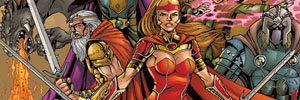5.2 splitting the Training and evaluating facts
5.1 Unigram Tagging
Unigram taggers are based on straightforward statistical formula: per token, assign the label that will be almost certainly for that certain token. Eg, it is going to assign the tag JJ to the incident associated with word frequent , since repeated can be used as an adjective (example. a frequent phrase ) more often than really put as a verb (e.g. We frequent this cafe ). A unigram tagger behaves like a lookup tagger (4), except discover a convenient technique for configuring it, called education . In the next signal test, we teach a unigram tagger, put it to use to tag a sentence, then consider:
Given that we’re practise a tagger on some information, we should take care not to test it for a passing fancy data, while we performed into the preceding sample. A tagger that simply memorized their education facts and made no attempt to make a broad product would become a fantastic rating, but could getting ineffective for marking latest text. Alternatively, we ought to split the information, education on 90% and evaluation throughout the staying 10per cent:
Although the get try tough, we’ve a significantly better picture of the usefulness with this tagger, in other words. the performance on formerly unseen text.
5.3 Standard N-Gram Tagging
Whenever we play a code handling job considering unigrams, we’re making use of one product of framework. In the case of marking, we just think about the current token, in separation from any large framework. Considering these a model, the greatest we could do was label each phrase with its a priori likely tag. This implies we would label a word such as wind with similar label, whether it appears from inside the context the wind escort services in Colorado Springs or even to wind .
An n-gram tagger was a generalization of a unigram tagger whose context may be the current term alongside the part-of-speech tags in the n-1 preceding tokens, as shown in 5.1. The label to get plumped for, tn, try circled, while the framework is shaded in grey. When you look at the illustration of an n-gram tagger found in 5.1, there is n=3; definitely, we consider the tags of these two preceding statement besides the latest term. An n-gram tagger chooses the tag which most likely for the considering perspective.
A 1-gram tagger is another label for a unigram tagger: in other words., the context regularly tag a token is only the book with the token itself. 2-gram taggers may called bigram taggers, and 3-gram taggers have been called trigram taggers.
The NgramTagger lessons makes use of a tagged education corpus to find out which part-of-speech tag is most likely for each context. Here we come across a unique instance of an n-gram tagger, particularly a bigram tagger. 1st we train it, subsequently put it to use to label untagged phrases:
Observe that the bigram tagger is able to tag every word in a phrase they watched during instruction, but really does poorly on an unseen sentence. The moment it meets another keyword (in other words., 13.5 ), it is incapable of assign a tag. It can’t label this amazing word (for example., million ) regardless of if it was viewed during education, because it never saw it during training with a None tag regarding previous phrase. Therefore, the tagger does not label other phrase. Its overall accuracy score is quite lowest:
As n becomes large, the specificity of contexts boost, as do ability that the facts we wish to label covers contexts that were maybe not found in the training data. This might be referred to as simple information complications, and is also rather pervasive in NLP. As a consequence, there is certainly a trade-off between the accuracy as well as the plans of our success (referring to associated with the precision/recall trade-off in information recovery).
Category: Uncategorized










